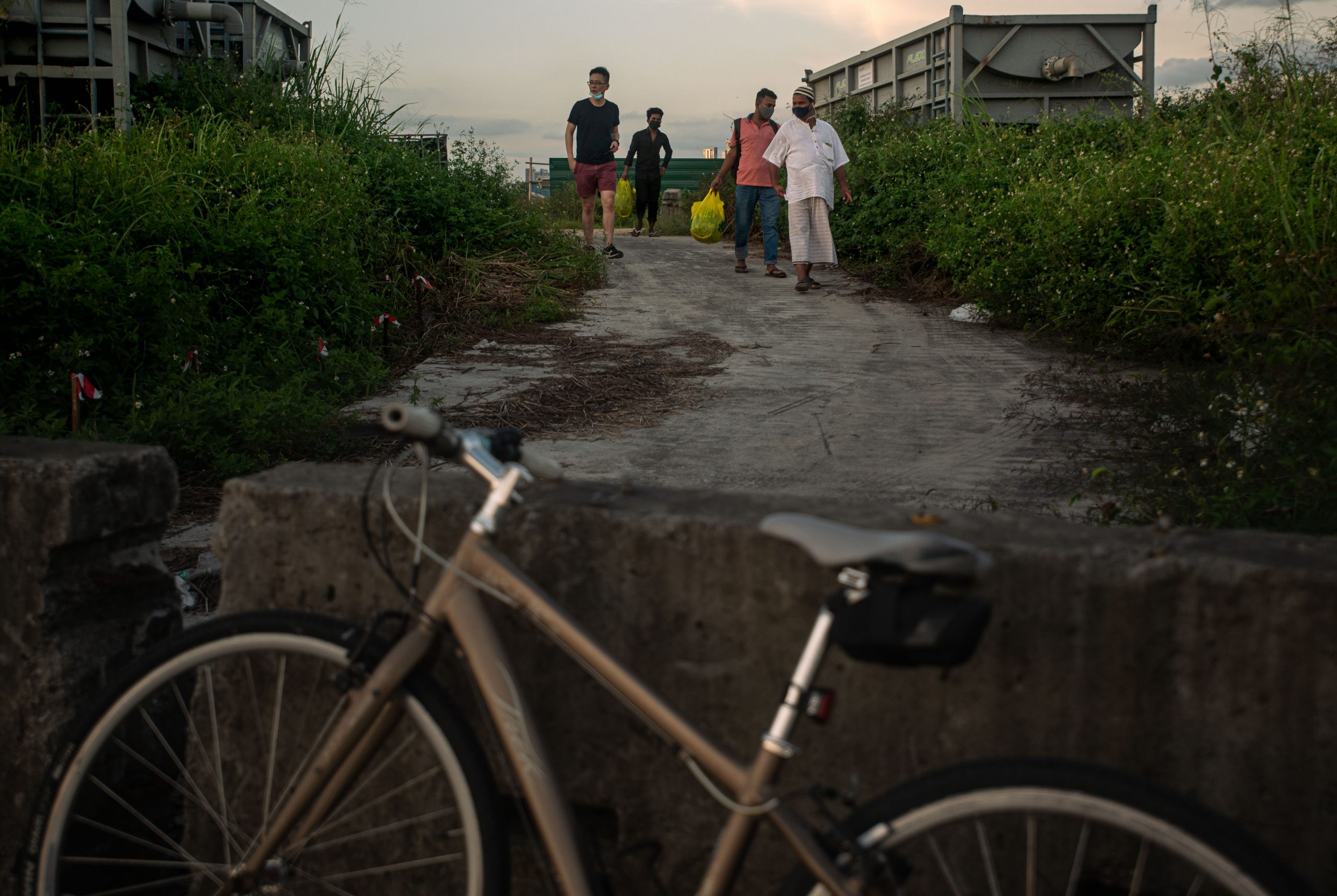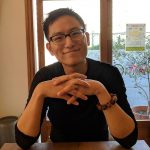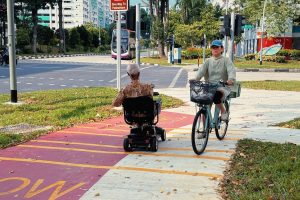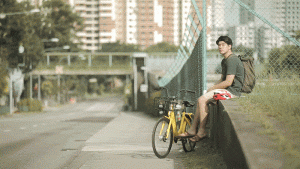Photography by Feline Lim.
In my younger and more vulnerable years, I thought I had it all figured out.
I’d imagined a life for myself where I had the freedom to come and go as I pleased. And my wish came true. Over the past decade, this nomadic mindset has led me to live in dozens of cities around the world, and taken my wife and I on many adventures.
ADVERTISEMENT
Which is why the decision to leave Singapore during the “Stabilisation Phase” should have been an easy one. I had seen all there is to see here on the Little Red Dot. Been to all the places, and interviewed people I wouldn’t have otherwise gotten the chance to meet.
What did I learn from my Singapore experience? What did it mean in the end? What grand, sweeping, plagiaristic statement could I make about my time here?
With my departure imminent, I went on one last bike ride through Sungei Kadut to find out.
1. The ulu-ness of Sungei Kadut
Sungei Kadut is the last place left on main island Singapore that I’d never set foot on.
Since joining RICE and moving to Singapore in March 2020, two weeks before the circuit breaker, I’ve covered everything from work culture to fungal culture. In my boredom, I stayed overnight at Kranji and walked 12 KM to Tuas. Unwittingly, I’ve written a novel about this city, and am finally on the cusp of running out of things to say. By cycling to the furthest point in Sungei Kadut, with Malaysia just across the water, I may have finally reached my limit.
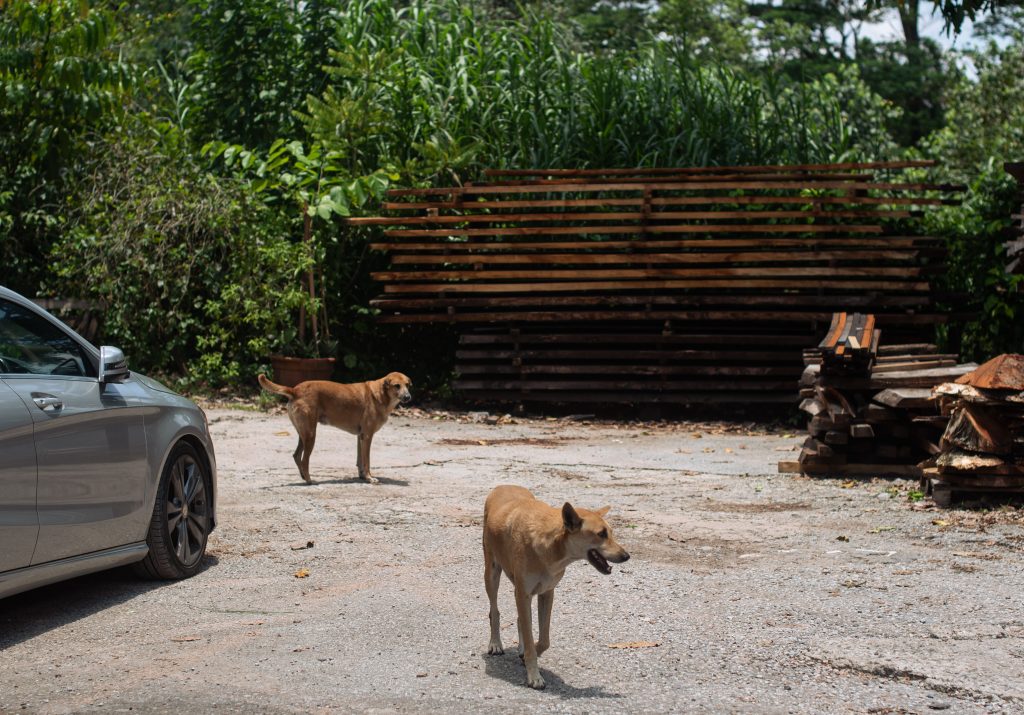
Feline is my photographer for the trip. Being on different teams, we had never worked together before, but I’d long admired her methodical approach to her work. In any case, this girl is not so simple. I can never tell what she’s thinking at any given moment. She mulls things over for a full five seconds longer than the average person before she speaks.
“Methodical,” she says, as if measuring that word.
“That’s a euphemism for slow,” I say.
She laughs. From Verde Grove, we cast off on our bikes, without a map or much of a plan, setting ourselves adrift into the heart of Sungei Kadut.
“Am I going to be a character in your story?” asks Feline. “Because I prefer to stay behind the scenes.”
“Don’t worry,” I say. “I got you.”
2. Invisible life
As it turns out, this story really doesn’t work without Feline.
First of all, Sungei Kadut is her neighbourhood, and she’s the one who had invited me on this trip. Second, I’d been trailing her on my bicycle for the entire journey, stopping when she stopped. Each time, I’d wait for her to (slowly) take the camera from its bag, snap a few photos, then (slowly) pack things up again. At one point, her camera strap gets stuck in her front wheel, and I’m too amused to get off my bike to offer help.
ADVERTISEMENT
In many ways, I’m just a passenger on this journey. Like Nick Carraway from The Great Gatsby, I allow myself to be carried along by the story, a witness to events that are beyond my control.
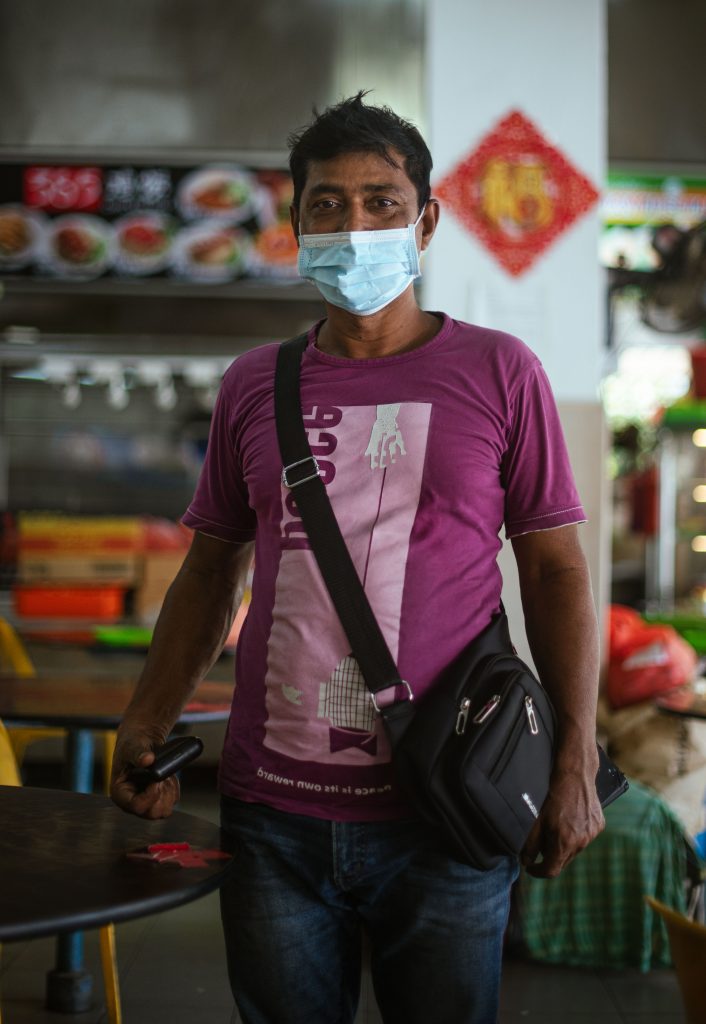
“I struck up a conversation with this man while you were buying drinks,” says Feline. “He lives near Senoko Port, and was here to get his lorry driving license. I wish I had asked for his name.”
Some people are just naturally drawn to the camera. Even with the mask on, you can see it in their eyes, in the energy that they give off. This man is smiling, vulnerable and completely in the moment.



Enroute, we make a pit stop at a wet market catering to migrant workers on their way back to their dorms after work.
“It was nice to see what the workers would buy from the market. Their shopping choices are very basic and functional. Vegetables. Spices. Rice. Simple stuff to cook.”
At every stop, the camera only manages to catch a brief glimpse of these mens’ lives. The rest is obscured.

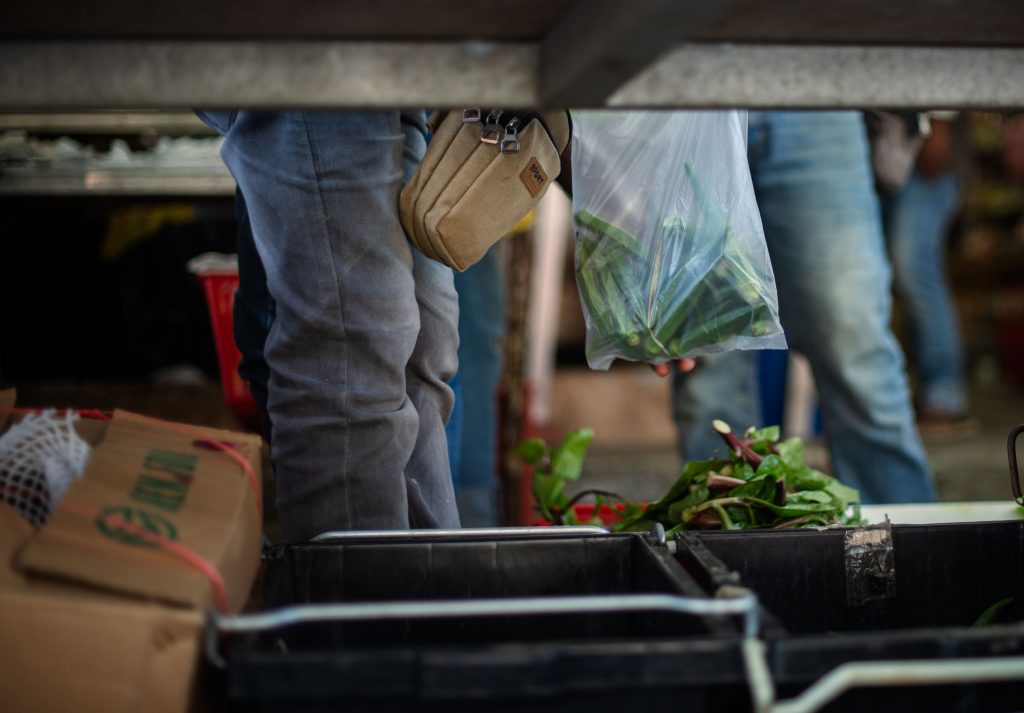
Halfway through our cycle, we stumble upon an unlikely Hindu temple. A flock of chickens strut outside the temple grounds.
Feline and I hesitate at the entrance, until a young Indian couple waves us in.
“Are you sure?” I ask.
“No problem, brother.”
At the altar, we watch the couple pour milk over a dark polished stone, without understanding why.
For some reason, I don’t feel like asking.
Feline also doesn’t take any photos. She tells me afterwards that she was feeling self-conscious.
Which is just as well, I think. Some things should remain sacred.
3. Kopitiam objects



This is an ordinary scene at an ordinary coffee shop. You can tell the type of clientele who eat here from the empty dishes at the tray return station. Here we have Chinese uncles eating claypot rice and day-drinking Tiger Beer.
The camera doesn’t judge. This is their daily life.
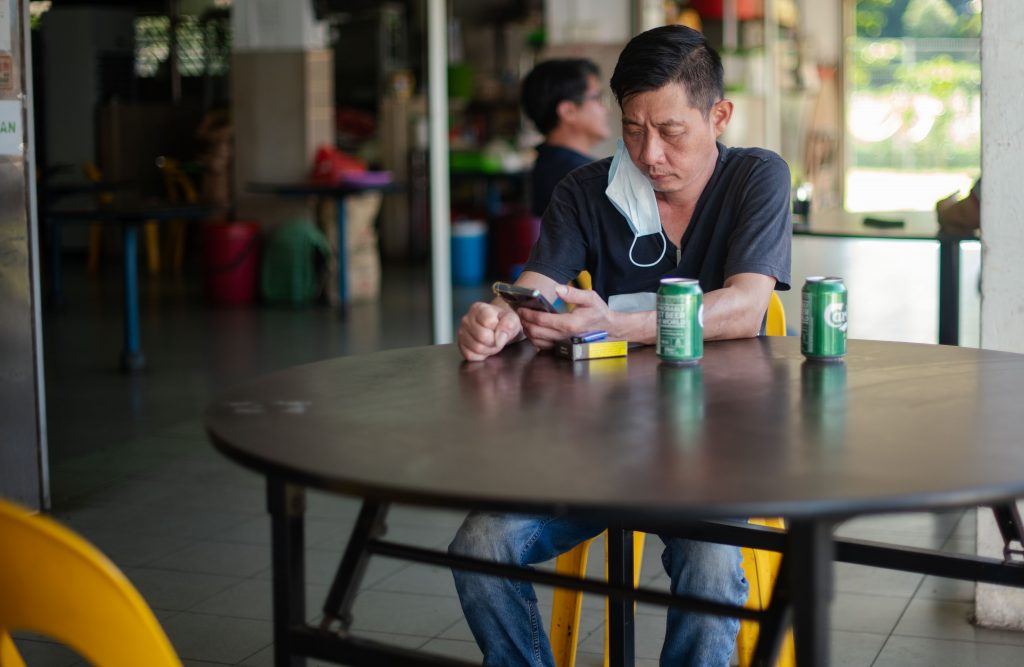
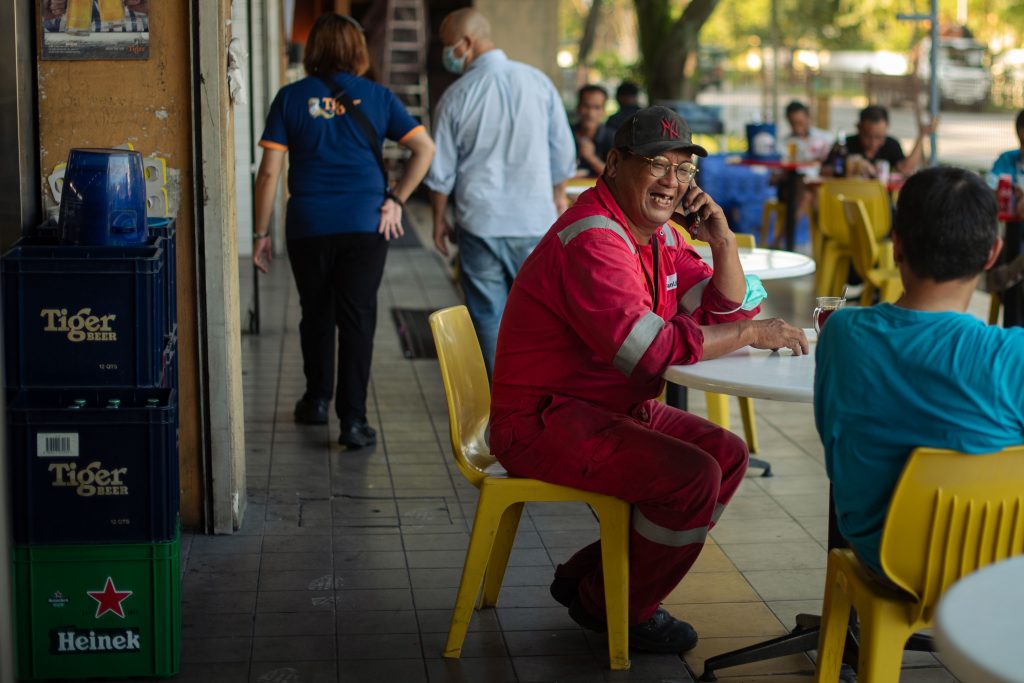
4. Conversations
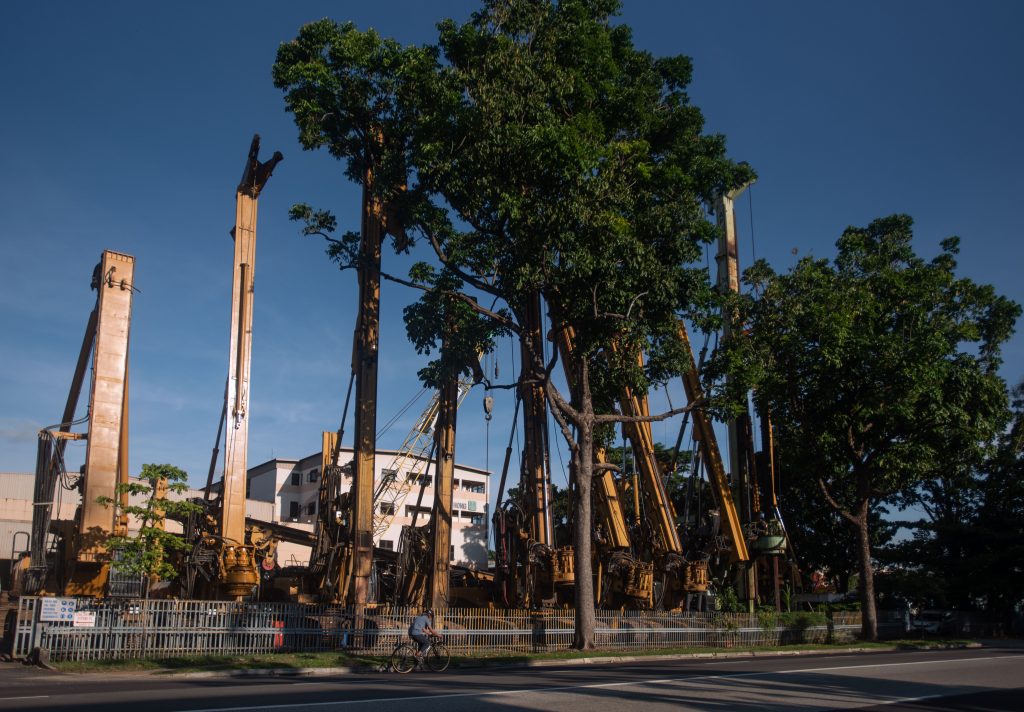
The most common sight in Sungei Kadut is seeing the interplay between nature and industry.
“The cranes look like they’re blending in with the trees,” says Feline.
The verticality of the machines is striking. There’s a certain beauty in industrial objects. You just have to look at it in the right light.

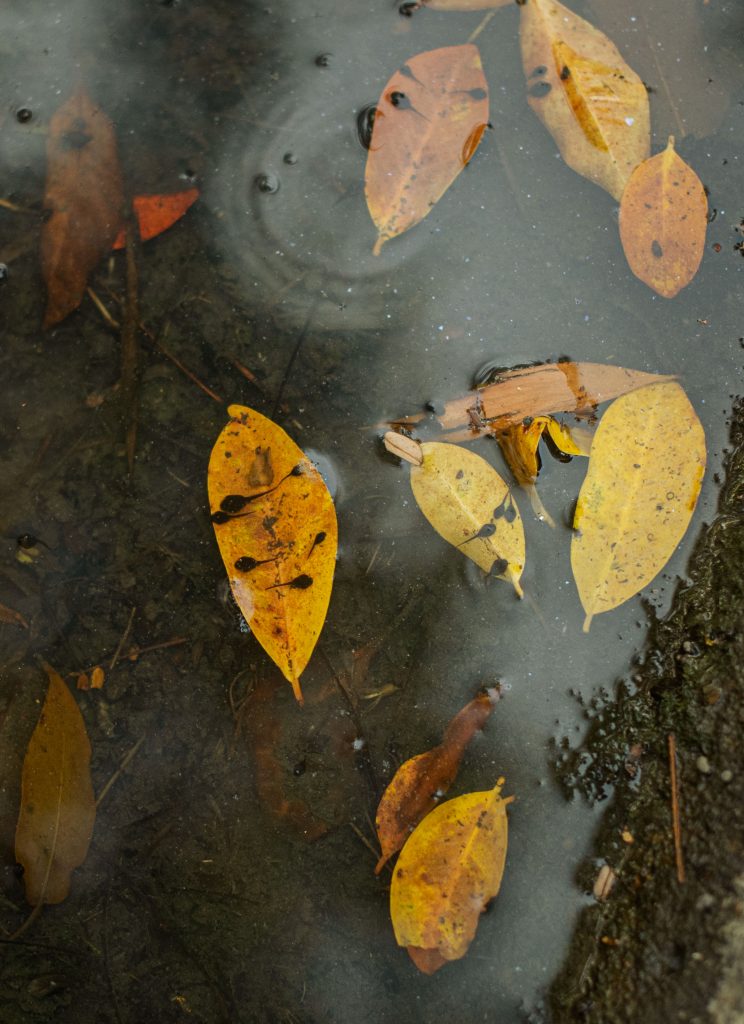
“I took this photo for the tadpoles. Remember I pointed them out to you?”
“No, I didn’t even notice the tadpoles until you brought it up. I thought you took this because of the colour of the leaves. Like a dream of autumn in a tropical city without seasons.”
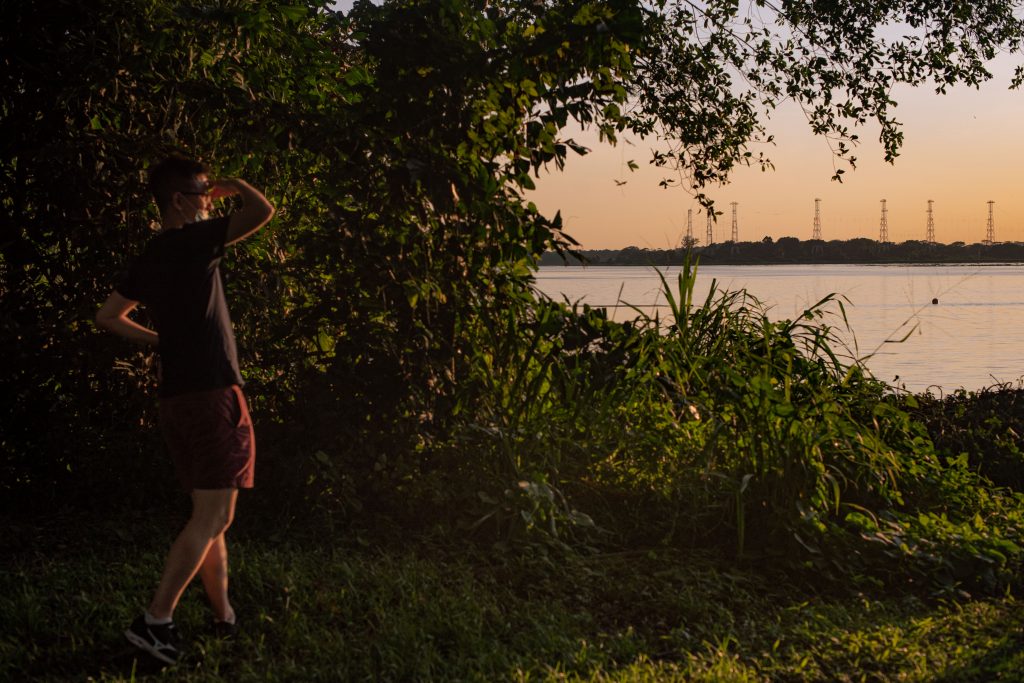
“I made you stop in a clearing at golden hour. It was super bright. The sunset was shining directly in our eyes. Wish we could’ve stayed longer.”
“Feline, can you tell when your subject is feeling self-conscious?”
“Yep, that’s the problem with the camera sometimes. It puts people on guard.”
“Well, just so you know, I’m always on guard. I was hyper aware of the camera here.”
“I see. So are you going to keep this photo in?”
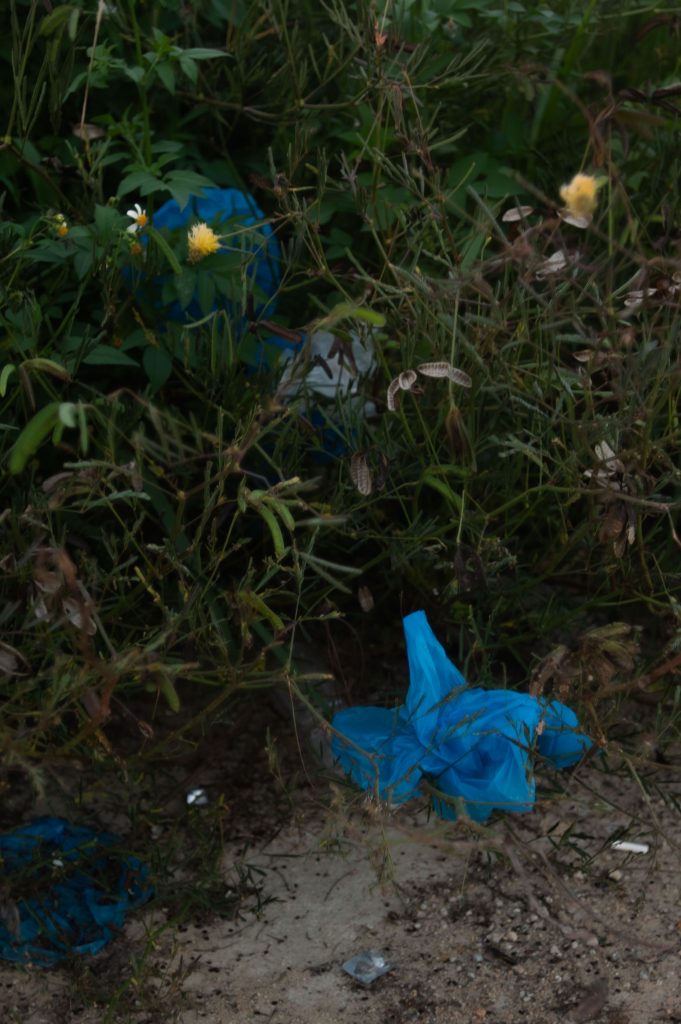
“The blue plastic bags here looked like flowers to me. A fallen flower or leaf.”
“It does?”
“Photos are like cloudspotting. You see what you want to see.”
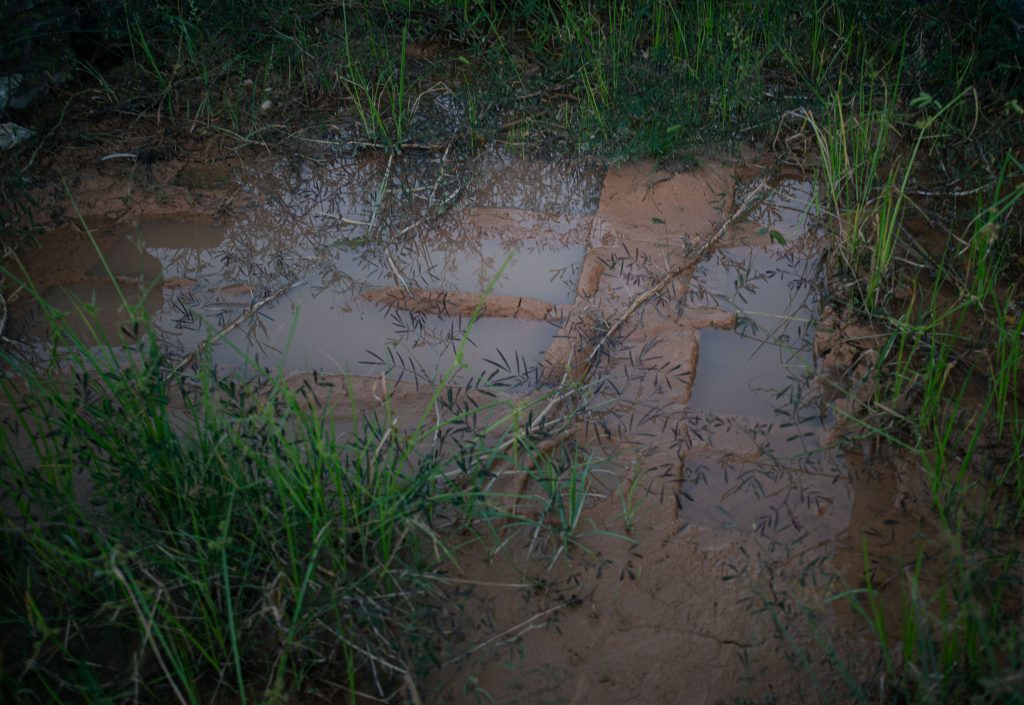
“I took this for the tracks in the mud. I wonder what kind of machine passed through here. You can delete this photo.”
“Okay.”
5. After hours
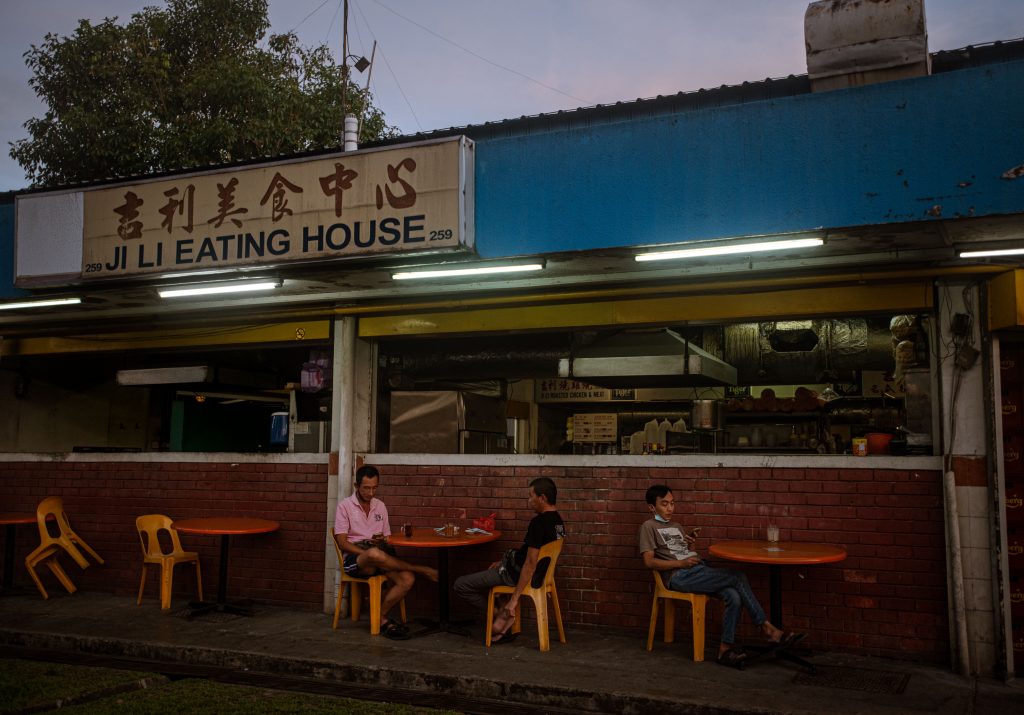
There are a lot of eating houses peppered throughout the estate. This one, Ji Li Eating House, is right at the Malaysia border, overlooking the Straits of Johor.
At sunset, people come here to unwind after a long work day.
There are still some hidden gems out here in Sungei Kadut. These are the types of eateries that only people who live in this neighbourhood would know about. But if you take the time to look past the old and dusty exterior, you can come away with something special.
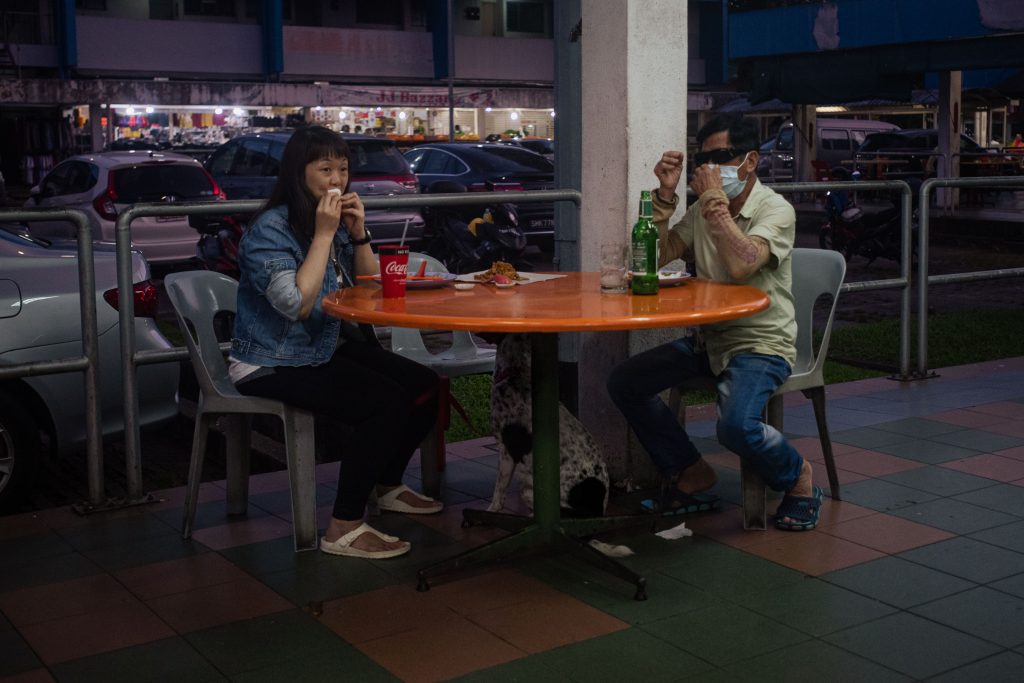
“Look at the dog hiding underneath the table. And the man and woman sitting above it. Do they know each other?”
“Are they husband and wife?”
“It doesn’t look like they know each other.”
6. What writers and photographers do
Sunset that evening was breathtaking. But I only remember fragments of the calm bike ride back to Verde Grove. I remember gliding past a man hosing down his car at a gas station, and the spray of fluorescent droplets against the night sky.
An empty bar with a festive tropical theme and a roof made of thatched straw. It feels desolate and no music plays over its speakers.
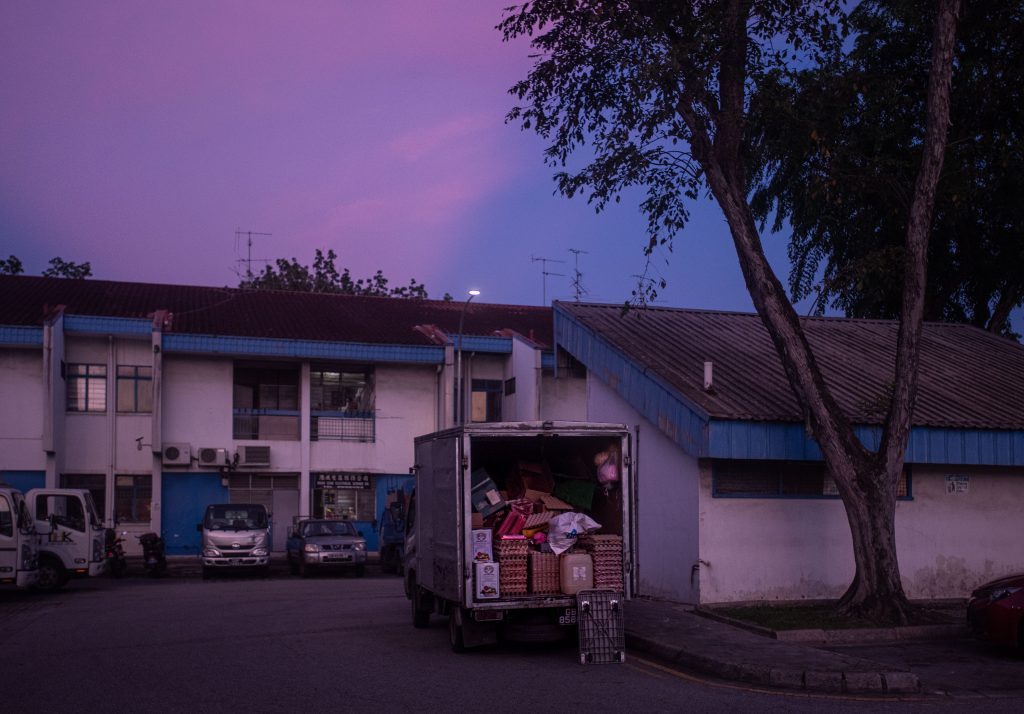
“Sometimes I’m afraid I’ll forget how something or someone made me feel, so I’ll snap a picture of the moment to revisit it. Like a mental image, but in a photo,” said Feline.
“Which I guess is why I sometimes take pictures of pedestrian things. Because in my head, it’s not so much about the aesthetic as it is the act of documenting. Does that make sense?”
It does make sense.
The process of writing is similar, but different. The writer has no camera. He or she relies on a combination of memory and self-delusion. A good narrative is like hypnosis. A kind of suggestive therapy (therapy for who, I wonder). As a tribe, writers are like that boy who realises what he should’ve said to the girl he liked, hours after the interaction occurred, back in the darkness and safety of his own room.
To write is to grapple with your own insecurities, flaws and neuroses. Maybe this is why I’ve never met a hip and well-adjusted writer in my life.
I’m generalising, of course. Speaking for myself, my particular hang-up is that I live full-time in my own head, constantly analysing, anticipating, and second-guessing every experience. Sometimes it gets so bad that I feel like I’m too busy playing the spectator in my own life to truly enjoy the moment. In this sense, I’m the opposite of a musician or a dancer.
I can never tell when things are good until it’s already in the rearview mirror.
And if I don’t find it on the page, then it’s lost for good. I will never know what anything means.
“For someone who seems so smart,” my wife once told me, in exasperation, “You can be a real idiot sometimes.”
7. The Long Goodbye
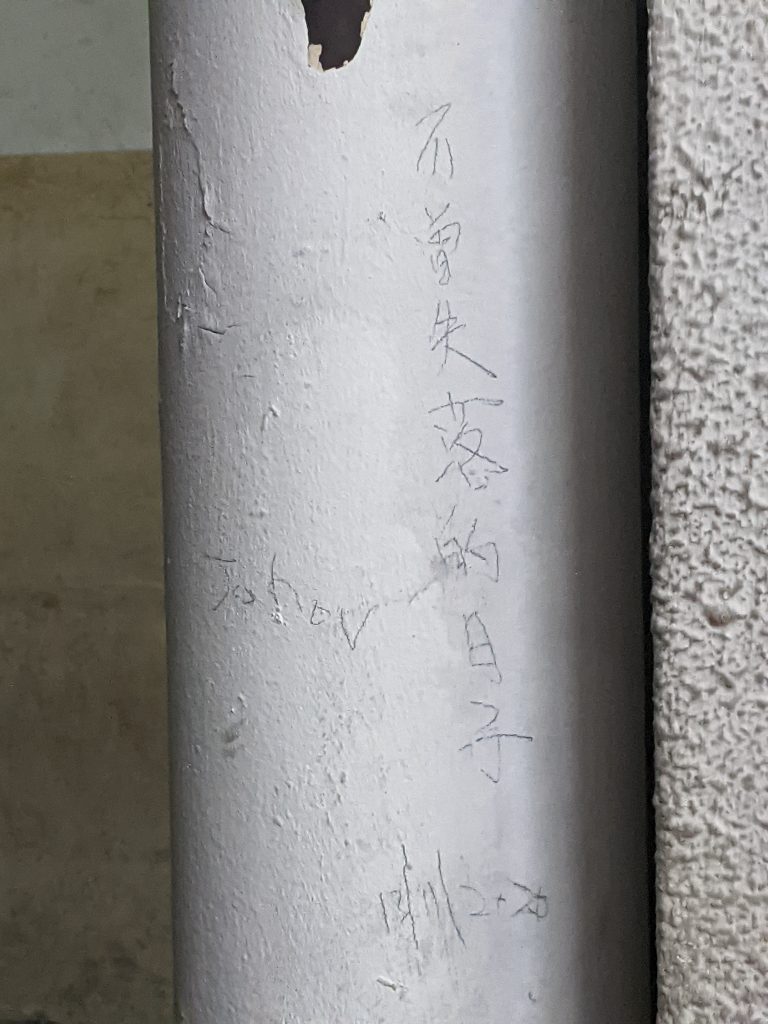
Anyway, the journey’s over. It’s time to go home.
I moved to Singapore with the promise of regional travel and experiencing the local culture. Under the circumstances, I think I did the best I could. I still don’t know what the new normal looks like, but honestly, I’ve run out of patience to find out.
I’d spent most of the pandemic here in Singapore, experiencing the same boredom, frustration, and disappointment as everyone else. I’ve mourned cancelled plans, family separations, and missed connections. There have been moments of joy and discovery too. After Sungei Kadut and my extended two-year layover here, it’s tempting to think that I’ve seen all there is to see. That I’ve figured this place and its people out.
But who am I kidding? I barely understand myself.
Next month, when I board the red-eye flight back to Taipei, and before my plane reaches cruising altitude, I might think back to the lights of the city behind me. The lives and stories beneath my wings.
Can we ever truly know a place like Sungei Kadut? Can two strangers ever really understand each other beyond a few fragments taken at a moment in time?
I don’t know the answer to these questions. In any case, I’m too tired to think.
Why don’t you ask me again when I land?


